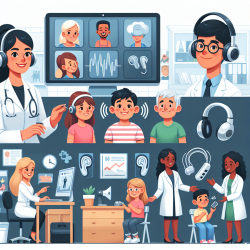Introduction
As practitioners dedicated to enhancing the lives of children through online therapy, we are constantly seeking ways to improve our skills and outcomes. One intriguing area of exploration is the integration of Complementary and Alternative Medicine (CAM) into our practice. A recent study titled A Focus Group Study of Medical Students’ Views of an Integrated Complementary and Alternative Medicine (CAM) Curriculum: Students Teaching Teachers offers valuable insights that can guide us in this endeavor.
Key Findings from the Study
The study, conducted at the University of California, Irvine, involved focus groups with medical students to evaluate the effectiveness of a CAM curriculum integrated into their medical education. Here are some key findings that can be applied to our practice:
- Student Engagement: Students expressed a preference for hands-on, experiential learning over traditional lectures. This suggests that incorporating interactive and practical CAM techniques in therapy sessions could enhance practitioner skills and client engagement.
- Evidence-Based Approach: As students progressed through their education, they increasingly valued evidence-based practice. This highlights the importance of integrating CAM modalities that are supported by research, ensuring that our therapy practices are both innovative and scientifically sound.
- Awareness and Sensitivity: The curriculum aimed to raise awareness about CAM and its potential benefits and risks. As practitioners, fostering an open dialogue with clients about CAM options can enhance trust and ensure a holistic approach to therapy.
Implementing CAM in Practice
Based on these findings, here are some actionable steps to integrate CAM into your therapy practice:
- Stay Informed: Regularly review current research on CAM practices relevant to speech language pathology. This will ensure that your practice is grounded in evidence-based methods.
- Incorporate Experiential Learning: Introduce interactive CAM techniques, such as mindfulness exercises or music therapy, into your sessions to enhance engagement and outcomes.
- Educate Clients: Discuss the potential benefits and limitations of CAM with your clients, ensuring they are informed participants in their therapy journey.
Encouraging Further Research
The study underscores the need for ongoing research into the efficacy of CAM practices. As practitioners, we can contribute to this body of knowledge by documenting and sharing our experiences with CAM integration, thus supporting a culture of continuous learning and improvement.
Conclusion
By embracing the insights from this study, we can enhance our therapy practices, ensuring they are both innovative and grounded in evidence. As we continue to explore the potential of CAM, we open new pathways to improve outcomes for the children we serve.
To read the original research paper, please follow this link: A focus Group Study of Medical Students’ Views of an Integrated Complementary and Alternative Medicine (CAM) Curriculum: Students Teaching Teachers.










